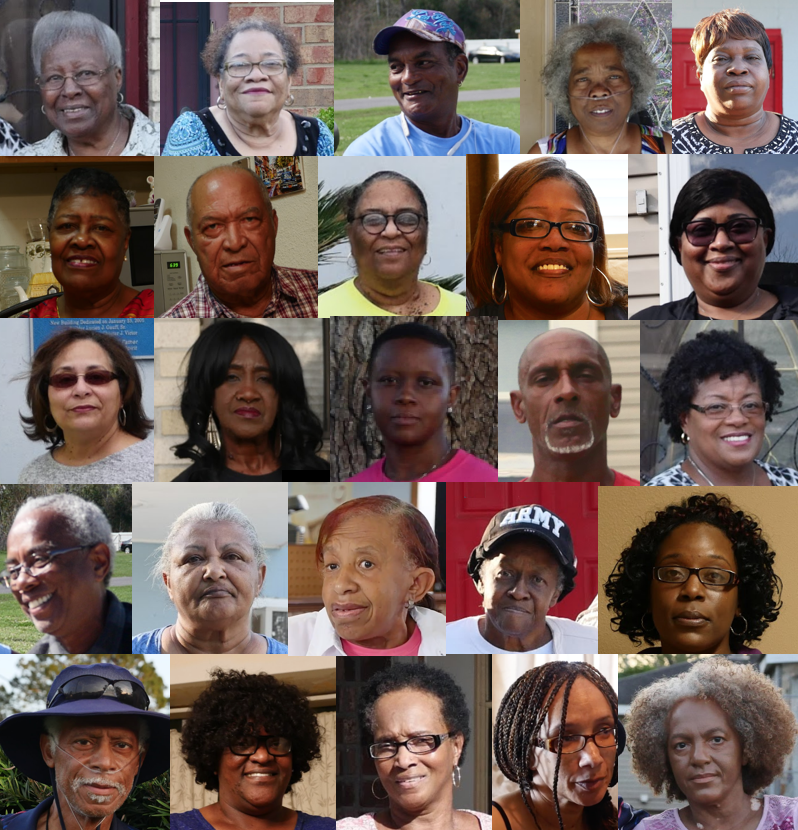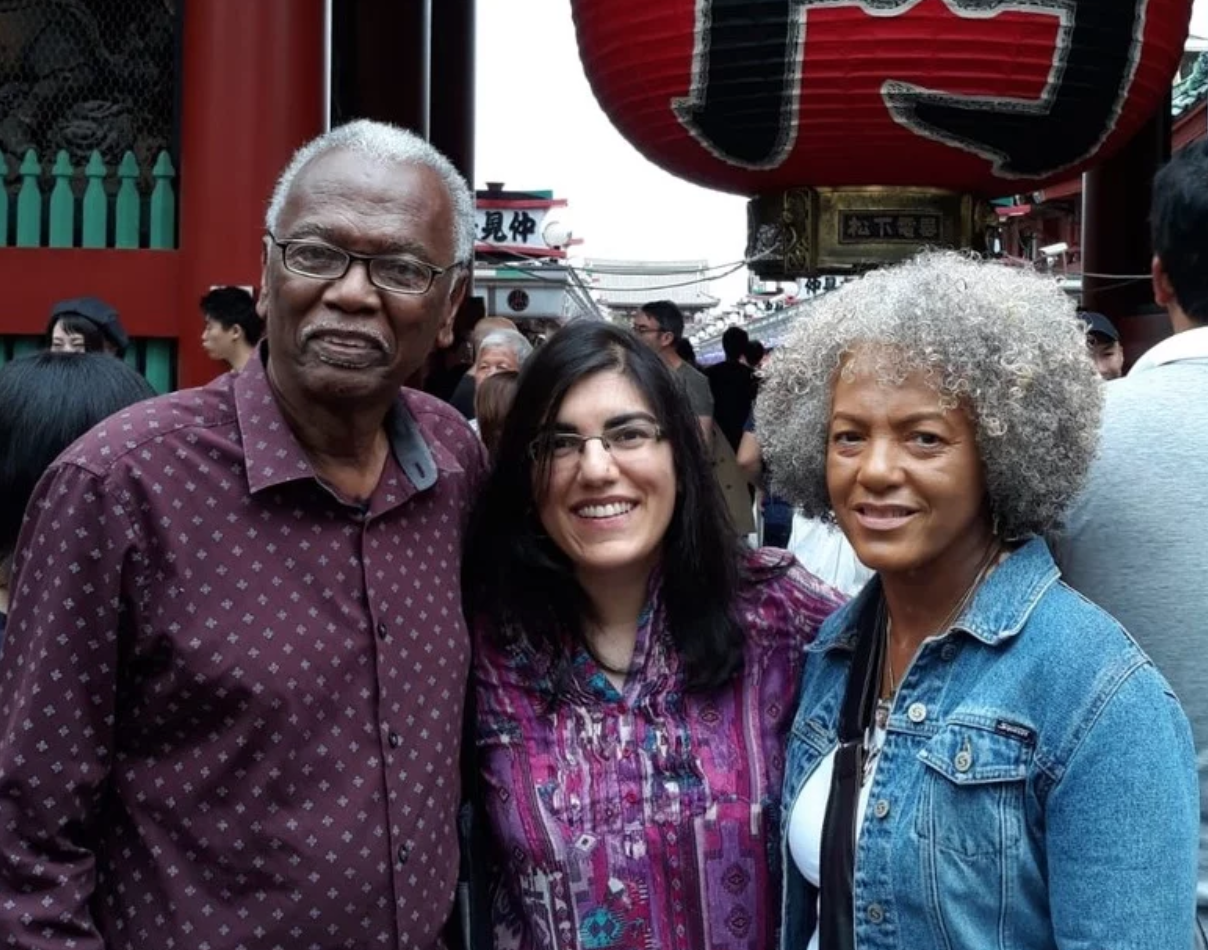Environmental Racism in Louisiana
Last updated February 2021
In Louisiana, the area along the Mississippi River between New Orleans and Baton Rouge has long been known as “Cancer Alley.” More than 150 chemical plants and oil refineries dot this 85-mile stretch of land, where most communities are predominantly African-American and many residents attribute staggering levels of cancer and other illness to toxic air emissions from industry.
One such community is located in the Reserve/LaPlace area of St. John the Baptist Parish, adjacent to a neoprene plant owned by the Denka and DuPont corporations. In 2016, after learning from the Environmental Protection Agency (EPA) that residents of the census tract closest to the Denka/DuPont plant face the highest risk in the country of developing cancer from air pollution, community members formed the Concerned Citizens of St. John the Baptist Parish organizing group. The Concerned Citizens continue to demand that the Denka/DuPont facility reduce its emissions of the toxic chemical chloroprene—an EPA-designated “likely human carcinogen”—to 0.2 micrograms per cubic meter, the maximum level of emissions that would keep the risk of cancer from air pollution within the EPA’s “upper limit of acceptability.”
After intensive collaboration with the Concerned Citizens group to determine the most effective course of action, a team of fourteen Stanford undergraduates traveled to the area of the Denka/DuPont chemical plant and implemented a household health survey over nine days. Students surveyed hundreds of households to document the cancer, respiratory, and other health effects of the facility. Over the course of the next year, research consultants and University Network staff analyzed the data collected in the health survey.
In July 2019, the University Network released a preliminary version of the health study along with an accompanying video and webpage featuring narratives from more than twenty area residents in their own words. In February 2021, the health study was published in the peer-reviewed scientific journal Environmental Justice. The full manuscript can be accessed here.
What is Cancer Alley?
In Louisiana, the area along the Mississippi River between New Orleans and Baton Rouge has long been known as “Cancer Alley.” More than 150 chemical plants and oil refineries dot this 85-mile stretch of land, where most communities are predominantly African-American and many residents attribute staggering levels of cancer and other illness to toxic air emissions from industry.
One community in Cancer Alley is located in the Reserve/LaPlace area of St. John the Baptist Parish, adjacent to a neoprene facility that has been emitting the toxic chemical chloroprene—classified by the Environmental Protection Agency (EPA) as a “likely human carcinogen”—since 1969. The plant was entirely owned and operated by DuPont until November 2015, when DuPont sold the neoprene division of the plant to Denka Performance Elastomer (DPE). The Japanese corporation Denka Co. Ltd. owns 70% of DPE, and another Japanese corporation—Mitsui Co. Ltd.—owns the other 30%.
In December 2015, the EPA released its National Air Toxics Assessment (NATA), which found that the Denka neoprene facility in Louisiana was emitting huge quantities of chloroprene. The EPA installed six air monitoring units around the plant and began monitoring chloroprene emissions in the area.
According to the EPA’s most recent NATA, released in August 2018, the risk of developing cancer from air pollution in the census tract closest to the Denka plant is by far the highest in the country—nearly 50 times the national average—due to chloroprene emissions. The EPA advocates a significant reduction in chloroprene emissions from the Denka facility, such that air concentration of the chemical does not exceed 0.2 micrograms per cubic meter (µg/m³)—the maximum concentration that would keep cancer risk from air pollution within the EPA’s “upper limit of acceptability.”
For the past three years, community members—who joined together in 2016 to form the Concerned Citizens of St. John the Baptist Parish organizing group—have campaigned for reduction of chloroprene emissions to the EPA-recommended maximum level of 0.2 µg/m³. Although Denka signed a voluntary agreement to reduce emissions in January 2017 and finished installing emissions reduction technology by the end of that year, the EPA’s air monitoring data continues to show high levels of chloroprene emissions—well in excess of the 0.2 µg/m³ threshold—in the neighborhoods surrounding the Denka facility.
The EPA has affirmed its confidence in the scientific validity of its chloroprene assessment, stating that the assessment “was developed using a robust, transparent, and public process and represents the Agency’s top tier source of toxicity information on chloroprene.” Nevertheless, in June 2017, Denka submitted a request for the EPA to withdraw its chloroprene assessment, claiming that it had “suffered extraordinary hardship” as a result of the EPA’s findings. The EPA denied Denka’s request for reconsideration. Denka has appealed the EPA’s decision.
Last year, the University Network for Human Rights conducted a health study of more than 500 households in the neighborhoods surrounding the Denka facility, documenting the cancer, respiratory, and other health effects of the facility. Statistically, the cancer prevalence documented among residents living closest to the plant would almost never occur naturally. The study also found an inverse association between cancer prevalence and distance from the plant, indicating that high rates of illness among residents can be attributed to plant emissions. Residents’ longstanding suspicions about the health impact of the Denka facility are now backed by the results of the new study, which will be released in July 2019.






